Competition is a innate characteristic of the free-spirited minds who are eager to show their talents, capabilities and creative vision. In a very original manner, Master of Photography, a reality TV challenge is brought to life by the Sky Arts Production Hub for Sky Arts, Sky Arte HD and Sky Arts HD, and with Leica Camera as the exclusive technical provider, is a one-of-a-kind competition in search of the best European amateur or professional photographer. With €150,000, a show and a catalog at stake, these photographers will show their versatility and creativity to a handful of world-renowned photographers in the course of eight episodes and eight weeks. Subjectively speaking, all contestants show an astounding scope of talent and their images can only speak for themselves. We had the opportunity to interview a few of the contestants, offering a wide range of photographic style and aesthetics, talking about what seems to be one of the best photographic competitions in the world in search of the next Master of Photography.
We gathered with Laura Zalenga, from Germany, Rupert Frere from United Kingdom, Mary Stuart from Italy, and Gina Soden from United Kingdom, and asked them about their experience in the competition, how they got involved in it, and their expectations.
Please share a bit of your background. How and why did you become a contestant in Sky Art’s Master of Photography?
Laura Zalenga: While studying architecture I discovered my love for photography and slowly turned it into my job after graduating in 2014. Several friends of mine messaged me saying I should apply for Master of Photography and because it sounded like a great opportunity to learn a lot. Fortunately, I did.
Rupert Frere: My colleague told me about the show. I had some time during my lunch break so I entered immediately. I had completely forgotten I had entered only when I was selected for the show.
Mary Stuart: I heard about the show on the Internet and applied by submitting my photos.
Gina Soden: I am a full time photographic artist from the UK, I photograph abandoned buildings across Europe and exhibit them in galleries and art fairs nationally and internationally. Looking around for competitions to enter is something I do quite regularly. On this occasion I was told about this competition by my sister in law, so I thought I’d enter. I wasn’t sure at first, due to it being filmed and televised, but I like a challenge and trying to win 150,000 euros in a fast paced environment is definitely a challenge! I submitted my portfolio and a video interview (after about 20 takes!) and got notified I was shortlisted!
Master of Photography is a highly anticipated talent show, with some of the best amateur and professional photographers in Europe. What were your expectations when submitting your portfolio ? Can you share 2 images that you have included in your submission?
Laura Zalenga: I didn’t really expect to make it into the show. Knowing that everyone from Europe who was over 18 could apply made it pretty unrealistic to me to be one of the 12 finalists.
Rupert Frere: I had recently won the army photographic competition, I was pushed for time when entering the show so used the pictures from that. The portfolio was very military.
Mary Stuart: My expectations were very humble. I submitted my photos with no expectation. Photography is one of the most crowded art in the world and I knew that thousands of awesome artists were applying for the show. I was still so honored to have been chosen among many professionals.
Gina Soden: I wasn’t expecting anything, so I feel very grateful to have been shortlisted and then to make the final 12! I submitted Blue Orphanage and Chemical Plant, two of my photographs from some of my earlier series of work from Belgium and Italy. I felt these had quite a lot of impact and had strong compositions and symmetry, which are major elements in most of my works.
It is clear that the judges wanted to see a wide array of styles and aesthetics, as well as vision and creativity. How would you describe your photographic style, and how does it differ from that of the other contestants?
Laura Zalenga: My work is really driven by emotion and the wish to create another world within my photographs. It’s a lot about dreams and melancholy. Also I guess I am the only one using myself in my photos.
Rupert Frere: I’m a portrait photographer at heart, I love photographing people over anything, my style is very reportage, I love telling stories with my pictures. For me being an Army Photographer works as an advantage as I’m expected to photograph an array of subjects in my day to day job.
Mary Stuart: The topic of “photographic style” is still one of the most controversial topics for me. I think I still have lot to learn and my work is in continuous change. I can point out 2 or 3 recurrent themes in my photos such us architecture, feminine portraiture and emptiness. My style is cinematographic. I want my pictures to seem like from some movie frame. I also don’t have the need to talk about emotions through my work or necessarily tell a story. I don’t want to give a redundant meaning. I like to take photos, I like aesthetic and I like atmosphere. That’s all.
Gina Soden: My style is symmetrical, with a strong focus on composition, painterly textures and hints at a narrative. I think my work is quite different from the other contestants as it’s not based on people whether it be in the studio, street, landscape or in a war zone. I focus only on buildings (even though my background has been photographing models) I am not photographing fleeting moments either, it is all studied compositions using a tripod.
Leica Camera is the exclusive technical provider of the talent show. Had you used Leica equipment before the contest? Which was your favorite camera and why?
Laura Zalenga: I never worked with Leica before. My favorite was the Leica S. It’s the one that is closest to the cameras I am used to work with and which suits my way of working. I liked the Leica Q as well, but I am not a street photographer for example so I don’t need my camera to be small in order to not attract attention.
Rupert Frere: I had played with a few of my mates’ Leica’s but never used one in a professional capacity. My favourite is the Leica M monochrome. As a pro I know how to manually operate a camera, the M gives you that capacity and the monochrome makes everything look awesome.
Mary Stuart: I’ve never used a Leica before. My favorite ones were the Leica Q and the Leica SL. The Leica Q is small and quick, fast and the Leica SL gives me the range of options to cover different kinds of situations.
Gina Soden: I’d actually never used a Leica before the show, well, not a digital one anyway, so it was quite a challenge to get used to it – especially the SL as the ergonomics were quite different from my usual camera system. I really loved the Q, it was quick to set up, had a beautiful fast lens and fantastic focus and was probably one of the best compacts I’ve laid my hands on! I could imagine using that day in day out and on all of my shoots in abandoned buildings. Very versatile and also discreet. Can I have one please?!
How difficult was it to channel your creativity during fast-paced moments, with the competition and during back to back episodes?
Laura Zalenga: Quite difficult. I love a certain amount of strain but normally I work best when I have at least a bit of time to search for a quiet place and to let my thoughts wander. I love to do some research and to draw sketches but most often during the competition there was no time for any of these routines.
Rupert Frere: I have no problem remaining creative, the pressure of the show is tiring; however the judges were so unpredictable I found remaining creative the least of my problems.
Mary Stuart: It was very difficult to express our creativity. TV shows have a highly busy schedule and we weren’t able to have time for a full creative process. The challenge was much more about adapting yourself to work quickly in different situations.
Gina Soden: This was really hard. We were under a lot of pressure, whether it be time, location restrictions or limited focal lengths, or just equipment we weren’t used to. For me, I am used to a much slower pace, apart from when I am running away from security guards inside the abandoned buildings I go to!! I am used to itineraries where I plan down to the hour where I am going to be shooting and all the details. I had no idea what to expect and this really affected the way I was shooting and my submissions in the show. Photographers like to be prepared! Also post production was a challenge, with limited tools, as I use a vast array of tools in my usual work. However I felt that with the tools I did have, I could still put my stamp on my images.
From your point of view, what was the most challenging moment of the show?
Laura Zalenga: Probably staying true to yourself while constantly being under the pressure of comparison and so many new impressions.
Rupert Frere: The first episode was the hardest for me, I had no idea what to do and what the judges wanted, I think that was my weakest image.
Mary Stuart: The studio sessions. As photographers and not actors we were looking forward to take photos and not to record in the studio.
Gina Soden: Being on TV, the pressure of it all – haha. For me it was doing the first task with zero preparation, it was a little bit stressful to start with but I started to enjoy it when I let go of the fact that I normally shoot just abandoned buildings. I know it was a competition to find the Master of Photography, but within the genres of photography, you can know a little about a lot, and a lot about a little.. So trying to be a master of all genres is a tall order indeed!
What judge were you most excited to work with and why? What do you admire the most about this person?
Laura Zalenga: Rut, definitely. She creates photographs that convey emotions. Not in a bluntly, loud manner but in a silent, empathetic way. Of course you catch people’s attention with work that screams at them, but I love those who catch my attention with a whisper.
Rupert Frere: I’m always interested in other people’s opinions on my photography no matter who they are. Dave was pretty interesting, he is living proof that there is still money in photography.
Mary Stuart: I must admit that as a movie addict, the person I was most excited to work with was Michael Madsen. Having the opportunity to direct and photograph him was a life-changing experience for me as a photographer. I also appreciated the “mentor behavior” of Alex Webb. He is someone that critiques you in a constructive way.
Looking ahead, how do you think Master of Photography will contribute to your photographic career?
Laura Zalenga: I wish I had a clue 😉 I just hope people will see what my intentions were and that they can feel what I wanted to express with my work.
Rupert Frere: It’s hard to say, I hope people will like my work and pay me millions of pounds to photograph stuff.
Mary Stuart: I think that Master Of Photography has already given the first little contributions to my work. Sharing the set with 12 European artists has changed my way of approaching photography a lot. I’ve noticed that the photos I took before and after the show are already very different. With this experience my work has matured and I hope and expect to have a lot of visibility and contacts after it has been aired.
Gina Soden: I feel really happy about where my career is and where it’s heading – I love that I can carry out my passion day in, day out, and make a living from it. This competition could give me exposure and a way to showcase my artwork to an audience that I don’t normally get a chance to connect with.
Thanks to all participants.
To know more about Master of Photography, please visit the official website.
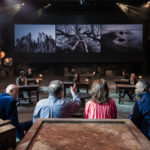


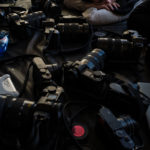
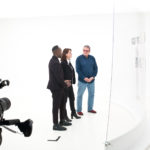


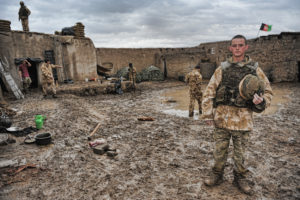
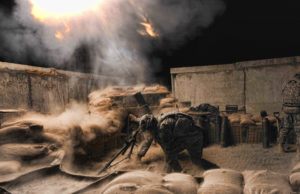



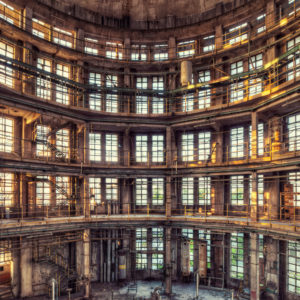
Comments (7)